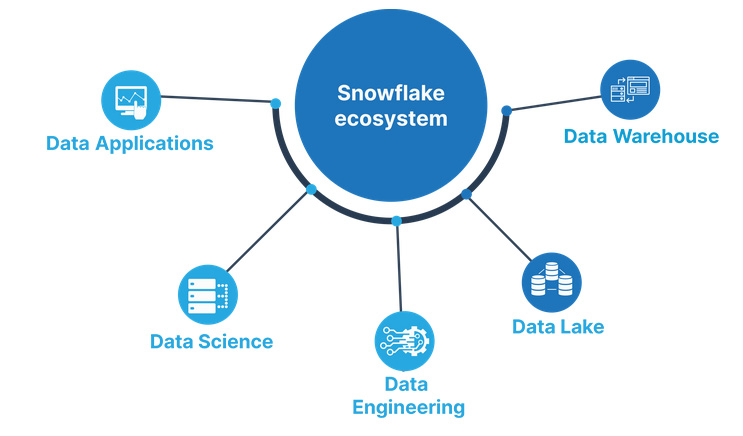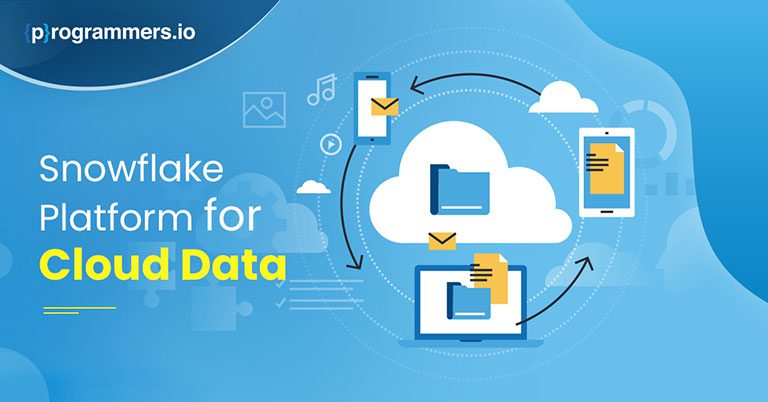Snowflake Data Cloud Business Solutions
With over 200 engineers and extensive data analytics expertise, snowflake developers are proficient in utilizing a variety of tools to work with Snowflake data warehousing.
Snowflake Implementation
Snowflake Implementation Snowflake implementation transforms data management through its advanced cloud services. With seamless integration, a multi-cluster architecture, and zero management overheads, Snowflake ensures instant data access and robust security. Facilitating elastic data storage and fostering collaboration through data sharing, it delivers an efficient and scalable platform. Automated performance tuning and integration with the Snowflake Data Cloud drive a transformative shift in organizations, enabling collaborative data analytics. Snowflake's implementation empowers businesses to unleash their data's full potential, serving as a cornerstone for informed decision-making and future growth in the dynamic landscape of data-driven strategies.
Snowflake Migration
Snowflake Migration Migration to Snowflake represents a strategic leap in data management. As organizations transition, they embrace a state-of-the-art cloud data warehousing solution. Snowflake's cutting-edge features, such as seamless cloud integration, multi-cluster architecture, and automated performance tuning, redefine data analytics. The migration ensures instant data accessibility, advanced security measures, and elastic storage, fostering collaboration through data sharing. Integrated with the Snowflake Data Cloud, it catalyses a scalable, efficient, and collaborative data ecosystem. This migration empowers businesses to harness the full potential of their data, unlocking new realms of insights and driving informed decision-making in the ever-evolving landscape.
Data Pipeline Design
Data Pipeline Design Designing a data pipeline in Snowflake involves crafting a strategic framework for efficient and seamless data movement and processing within the Snowflake Cloud Data Platform. The process begins with identifying data sources and defining extraction methods, ensuring compatibility with Snowflake's cloud-native architecture. Transformation steps follow, leveraging Snowflake's powerful capabilities for data manipulation and enrichment. Next, the pipeline incorporates loading mechanisms, utilizing Snowflake's optimized loading options for fast and parallel data ingestion. Finally, orchestration and scheduling components are implemented to automate the pipeline workflow. The result is a robust data pipeline design in Snowflake, facilitating streamlined data flow, scalability, and support for advanced analytics.
BI Integration
Business Intelligence (BI) integration involves the seamless incorporation of BI tools and solutions into an organization's existing systems and processes. The goal is to harness the power of data for informed decision-making. This process often includes connecting BI tools with data sources, such as databases or cloud storage, to extract, transform, and load (ETL) relevant information. BI integration ensures that the analytics tools can access real-time and historical data, enabling comprehensive insights. It often involves integration with other enterprise systems, such as Customer Relationship Management (CRM) or Enterprise Resource Planning (ERP), creating a unified and holistic view for data-driven decision support across the organization.
ELT Integration
ELT (Extract, Load, Transform) integration in Snowflake refers to the process of seamlessly incorporating ELT methodologies within the Snowflake Cloud Data Platform. With ELT, data is first extracted from source systems, then loaded into Snowflake's cloud-native data warehouse, and finally transformed within Snowflake using its powerful processing capabilities. Snowflake's architecture, designed to handle massive parallel processing, facilitates efficient and scalable ELT workflows. This integration empowers organizations to centralize their data in Snowflake, perform transformations at scale, and leverage Snowflake's advanced analytics capabilities. The ELT integration in Snowflake streamlines data processing, making it a cornerstone for modern, data-driven insights.









































